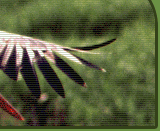| | Project Passport | | Project Title | Protection and management of the Northern Gauja Valley | | Project Duration | 2003 - 2007 | | Beneficiary | Latvian Fund for Nature | | Partners | Stock company Latvias State Forests, Zaubes cooperative, state enterprise Vides Projekti, non-profit organisation Vidzeme Development Agency, Municipality of Gaujiena, Municipality of Vireši | | Funding | European Union LIFE-Nature program, Latvian Environmental protection fund | | Project Location | Alūksne region (municipalities of Gaujiena and Vireši), Valka region (municipalities of Jērcēni, Plāņi, Trikāta, Valka, Vijciems and Zvārtava), Strenči town, Valmiera region (municipalities of Brenguļi, Kauguri and Valmiera) | | Project manager | Ilze Vilka, Viesturs Lārmanis | | Contact | | Phone | +371 7830996 | | FaX | +371 7830291 | | E-mail | vilcene@lanet.lv; larmanis@lanet.lv | | Address | Riga, Raiņa Blvd. 31 | | LV-1050, Latvia | The project Protection and management of the Northern Gauja valley started in the end of 2003. Project territory includes the river Gauja with a length of 140 km, its valley (from the border of Gulbene and Alūksne districts to Valmiera town) and surrounding territories. Total area of the project territory 18070 ha. Only 6 % of the area are protected till now. It is planned to assign the status of protected landscape area and include it in the Natura 2000 network. Mosaic landscape with extremely high biological diversity is characteristic to the Northern Gauja valley. Watercourse of the river changes and natural succession takes place in river meanders. 17 habitats of the EC Habitat Directive and 48 species of the Habitat and Bird Directives are found in the territory till now, including 7 priority habitats (e.g. Fennoscandian lowland species-rich dry to mesic grasslands, Fennoscandian woodland meadows, Western taiga, Alluvial forests with Alnus glutinosa and Fraxinus excelsior) and 3 species of priority (two bird species Corncrake Crex crex and Lesser Spotted Eagle Aquila pomarina as well as an insect species Hermit beetle Osmoderma emerita). Nature values of the territory are threatened mainly by intensification of the forest use and insufficient traditional management of grasslands (mowing and grazing). Actions planned under the project are aimed to restrict and prevent these threats. Proposed actions are the following: - Inventory and mapping of nature value of the territory (habitats, plants, birds, invertebrates and fish)
- Preparation of management plans for individual farms in the area of 700 - 800 ha
- Elaboration of management plan for the prospective protected area on the basis of the results of inventory, review of already existing data and negotiations with stakeholders
- Preparation of individual regulations on the protection and use of the territory and zoning
- Establishment of micro-reserves to protect forest habitats and nesting sites of bird species of conservation concern; provision of compensations to private land-owners for restrictions in forest use and signing agreements on observation of the protection regime. It is planned to pay compensations for restrictions in forest use in 230-270 ha of forest
- Restoration of meadows and pastures in the area of 240 290 ha, mainly by cutting shrubs
- Management of meadows and pastures in the area of 300 350 ha by mowing and grazing (the area will include restored territories). In order to apply grazing management purchase of cattle (90 animals) is planned
- Management of forests for biological diversity (removal of undergrowth in old pine forests in the area of 290-340 ha; cutting of bushes and trees around old oaks; removal of undergrowth in 2 Capercaillie lek sites in an area of 55 ha and blocking of ditches in one of them; forest management in demonstration sites to show forest harvest methods, other than clear-cutting
- Negotiations with stakeholders (land-owners, local people, forest authorities, farmers organisations, local municipalities, nature protection and environmental protection organisations etc.) on the preparation of management plan and other activities of the project
- Informative and educational activities: organisation of 21 seminar (including 5 seminars for demonstration of habitat management measures), preparation and publication of 3 booklets, production of a video and 4 TV stories, arrangement of informative and educational centre, preparation and placement of information signs, arrangement of 3 nature trails
- Monitoring of effects of the management actions in order to evaluate the state of habitats and species populations in the sites, where management actions will be applied
- Establishment of a supervisory council of the project and a management body of the territory
More information is available in the project web page www.zgauja.lv Pictures of the project |








